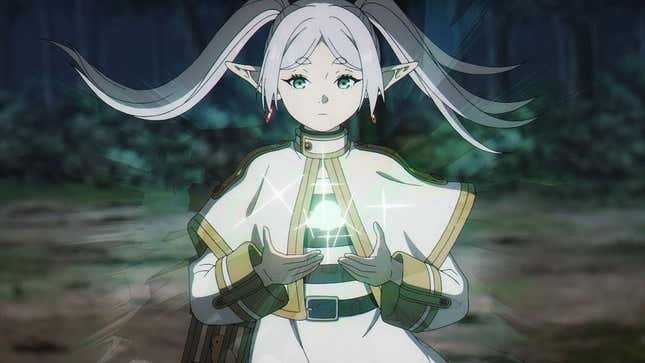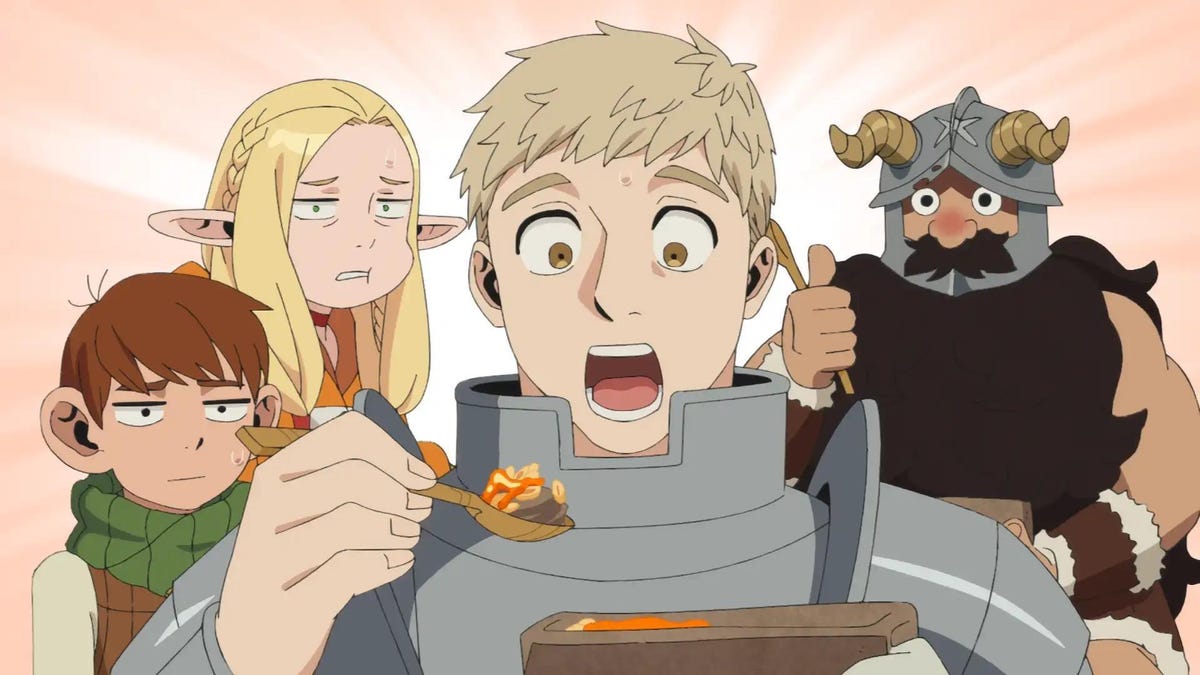Modern-day anime, and the industries that shape its creation and distribution, are in a stride not dissimilar to the one video games have been experiencing since around 2020 during the height of the covid pandemic, when everyone was stuck at home with nothing better to do than tackle their backlog of games (or, in this case shows). More people bought games, or subscriptions to streaming services to watch anime, and the industry rapidly expanded to meet the demand—but then, as restrictions lifted, and people returned to their office or school, both industries struggled to adapt again.
Like video games, which have seen record layoffs this year that many believe is a result of its massive 2020-era expansion, anime has become a victim of its own success. Crunch, the production of remakes that may or may not justify their existence, long-promised titles that see the light of day, and online discourse over flashy animation versus compelling writing have thrown the medium into disarray the last few years. While in many respects, having too much of a good thing is still having a good thing, anime is navigating a similar boom as the gaming industry. Whether it will follow a similar path is unclear, but we do know this: it isn’t sustainable.
The anime industry’s struggles
As with gaming, anime studio mismanagement all too often breeds crunch that forces animators to rush out a project that could’ve used more time in the proverbial developmental oven. Look no further than well-regarded studios like Mappa. Its meteoric rise as a fan-favorite studio with acclaimed shows like Jujutsu Kaisen and the final season of Attack on Titan coincided with the studio earning a reputation that it enabled crunch, while canceling long-promised projects in their wake. A phenomenon not unlike Naughty Dog and its drawn-out cancellation of The Last of Us 2 online multiplayer content after years of development.
Anime has the distinct advantage of a deluge of its seasonal content being adaptations of thriving weekly manga series, which are quickly spun into twelve 20-minute anime episodes. For years, this feedback loop has kept both industries healthy, but it has also shown signs of instability, with animators and manga creators buckling under the demand to produce more content weekly.
Read More: Spy x Family’s Unique Studio Collab Helps Prevent Anime Worker Crunch, Says Wit Studio Prez
In the best-case scenario, manga creators and animators are allotted extended hiatuses for their own health. In the worst-case scenario, they have to churn out unrefined episodes to meet the seemingly bottomless demands of their consumers. And in case of emergency, the broken glass solution to the problem of not having a new series to adapt is to redo older ones.

As with gaming, contemporary anime has gotten a tad too comfortable weaponizing nostalgia with anime remakes like Spice and Wolf, Fruits Basket, Urusei Yatsura, Ranma ½, The Rose of Versailles, and Magic Knight Rayearth just to name a few. While some remakes (like the Neon Genesis Evangelion rebuild films) justify their existence by exploring alternative narrative beats of source material à la the Final Fantasy VII Remake trilogy, others, like Netflix and Wit Studio’s anime remake for One Piece—aptly titled “The One Piece”—have fans scratching their heads.
When asked why they’d remake an ongoing anime that’s readily available on most streaming services and its own live-action series, Wit Studio president George Wada gave an answer not unlike how Capcom justified remaking Resident Evil 4 for the nth time: the technical advances of today coupled with the assertion that the anime’s original format (4:3 ratio) is off-putting to new viewers. The common refrain that remakes are necessary simply because their original productions are old is exactly the kind of uninspired justification the gaming industry made with The Last of Us 2 remake shortly after the original released.
The anime monopoly problem
And just like the modern games landscape, monopoly has seeped its way into the anime industry. Microsoft’s acquisition and recent mass layoffs of Activision Blizzard employees points to the problems that arise when one company gobbles up others. Anime’s version of that is Crunchyroll, the pirate website turned Sony-owned media conglomerate. In the wake of its own big bucks acquisition of competitor Funimation earlier this year, fans have faced the loss of their digitally-owned anime, closure of digital storefronts, and price hikes.
Read More: Netflix’s Binge-Model Release of JoJo’s Bizarre Adventure: Stone Ocean Ruined The Anime’s Hype
This becomes especially egregious when you consider that animation, like gaming, has only four major streaming services: Crunchyroll, Hidive, Netflix, and Hulu. While each has its own merits in terms of presentation and cost, these services often fail to properly promote a show, or get stuck in a delayed release schedule rut like Disney-exclusive anime. It’s no wonder manga and anime fans are so vocal about pirating rather than paying for a service that nickel and dimes them at every given opportunity.
Not everything is doom and gloom for anime. In a similar fashion to how SuperGiant Games’ Hades revolutionized the roguelike genre, the last year of anime has seen a steady stream of smash hits like Frieren: Beyond Journeys End and Delicious in Dungeon save the fantasy genre from the monotony of uninspired sentence-long isekai fantasy shows. Their secret? Aside from being written by women, a rarity in a male-dominated field, both series dare to go against the grain by not copy-pasting tried-and-true anime formulas.
While not all of the above clearly spells the fall of the Roman empire for anime as we know it, the structural parallels to the state of gaming, which is unquestionably in disarray after layoffs, is concerning. Hopefully, anime can right the ship, and focus more on quality rather than quantity.

